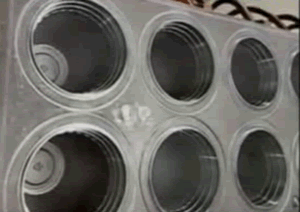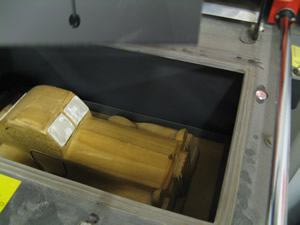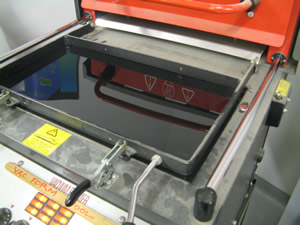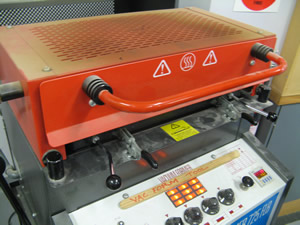Moulding of plastics
Vacuum forming

Thermoplastics such as polyethene, perspex and polypropene are suitable for such moulding procedures. The plastic comes in a sheet which is heated and then set into the mould by suction. Air is pumped from the mould forcing the plastic sheet to take shape over the mould.




The plastic sheet is heated and pulled over the mould. It is then sucked into the mould and quickly cooled to the solid state.
The process is fully automated, as shown on the left.

Vacuum forming is used in many school technology classes.
A mould is first prepared.


What type of plastic is used in vacuum forming?
What actually forces the soft plastic over the mould?